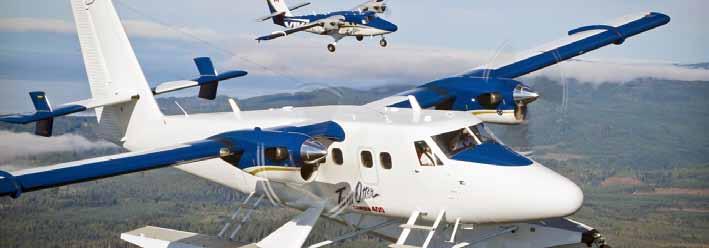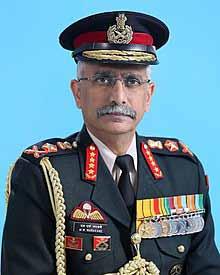
6 minute read
Successful Test Firing of BrahMos by Indian Navy
Aircraft Lease : The New Opportunity Under DAP 2020
Chiraag Samaddar
Advertisement
The Indian Coast Guard (ICG) is responsible for the security and safety, including constabulary and humanitarian functions, spanning across an EEZ of 2.2 million sq km(18th largest in the word), protect a coast line of 7516 Kms (15th largest in the world) and assumes regional responsibility for SAR cover to about 1950 Nm South of Kochi into the Indian Ocean.
Since modern maritime challenges are unannounced and threat developments take place with great rapidity, it is vitally important for the ICG to have sizable air assets for effective surveillance, constant monitoring and efficient threat responses. Violations of Indian customs and regulatory laws, Illegal, Unregulated and Unreported Fishing, marine pollution, smuggling of drugs, small arms and illegal immigrants, etc. impact coastal safety and security, result in economic losses and create environmental challenges of marine pollution that is fast encroaching into the protein and salt food chain. This in turn leads to health concerns and leads to the ever-increasing social costs due to ingress of drugs and terrorism breaching through the maritime boundaries of our country. Maritime aircraft, including Remotely Piloted Autonomous aircraft (RPAS) and seaplanes provide a ready solution to these tasks.
Modern maritime aircraft can be re-equipped with sensors and mission systems dedicated to fulfilment of the essential surveillance and monitoring missions of any modern Coast Guard to mitigate such challenges and threats. They can be launched from ashore and from small deck patrol vessels. Assuming state-of the-art surveillance equipment are fitted on board modern aircraft, flexible overviews of survey areas for marine pollution and seaborne traffic, quick assessments of oil spill sites, and deterrence of potential polluters, drug traffickers and smugglers can be undertaken expeditiously and at a very low cost. The ICG has no better option than to use modern aircraft and RPAS for these missions.
However, ICG aviation assets only comprise 38 Dornier coastal surveillance aircraft, four twin-engine Dhruv advanced light helicopters and 20 Chetak single-engine helicopters. Assuming even a serviceability rate of 75% these assets are grossly inadequate to protect our assets, resources and the lives and livelihoods of 18% of India’s population living in nine coastal states, four union territories and 77 districts of our country. Further, Hon’ble Prime Minister, Shri Narendra Modi, has said that the IOR region views India as the net security provider. This makes the requirement for surveillance and response to a variety of maritime challenges very complex, necessitating a higher force level of aircraft assets. Further, these aircraft are all sourced from HAL which also must produce the same aircraft for the Indian Navy and the Indian Air Force. With an average production capacity of less than 6 Do-228 aircraft per year and back log of orders and the Do-228 is hardly a modern aircraft compared to other platforms in the stable. Given these circumstances, and the fact that the ICG would require 120+ aircraft by 2030, it would not be possible for the ICG to achieve the vitally required force levels of its aviation fleet in the given time frame through exclusively relying on induction of ‘new buys’ Do-228 from HAL.
Efforts at obtaining aircraft from the ‘market’ have yet to bear fruit. The ICG had earlier issued a RFI to examine feasibility of a larger (6+3+10) Multi


Mission Maritime Aircraft (MMMA) which would be integrated by the Centre for Airborne Systems (CABS) with various sensors and mission equipment for a variety of missions but most notably pollution surveillance. The Defence Acquisition Council in its meeting of 23 December 2016 had accorded AON for procurement of 6 MMMA at a cost of about INR 5500 Crs. Therefore, it is evident that the MoD have recognised that MMMA are necessary for maritime surveillance, interdiction, air ambulance and pollution surveillance and control. The sensors for these aircraft were to be integrated by CABS.
For a rapid increase in force levels one possibility was to consider additional EADS CASA-295 aircraft, already under negotiation as the AVRO Replacement Program of the IAF for these roles, suitably modified for maritime operations. The case for MMMA has thus been combined with the IAF AVRO replacement program being undertaken in India as a TATAAirbus consortia endeavour with total orders at 62 aircraft. This project which commenced in 2011 is still to see contract conclusion and the first induction would begin 36 months from contract conclusion and payment of mobilisation advance. Deliveries for the IAF may only be completed not before 6-7 years since there is a substantial Make component in the program. Only then, would the ICG get its C-295 aircraft for integration of the various mission specific equipment. In any event, the earliest integration, given that CABS would be undertaking this exercise on a new platform, could take another 2-3 years to achieve the relevant air worthiness requirements. Hence, in the best-case scenario, the ICG would operationally induct this capability not earlier than 2030. This is a long and potentially undesirable capability gap.
As reported in the media the ICG has also not met with success in its quest for the Medium Range Maritime Reconnaissance (MRMR). The Request for Proposal (RFP), it had issued to acquire six MRMR aircraft, was cancelled in march 2020 after both the shortlisted Be-200 and the Bombardier Q-400 apparently failed to meet the required performance parameters. A fresh RFP with revised Staff Requirements is possibly being contemplated. This fresh case, given the historical record of acquisitions, would take at least until 2028 before the MRMR is deployed by the ICG.
In the context of the onerous responsibilities and role of the ICG, there is a huge capability gap which is highly unlikely to be bridged before 2030. Until then it must make do with the vintage Do-228, though some modifications in the propulsion package has been done, as its mainstay of maritime reconnaissance. Therefore, whilst the urgent necessity for the induction of the MMMA and MRMR has been recognised since 2016 the realisation of the required force levels will not be earlier than 2033. But, is such a capability gap acceptable in the present and predicted security environment, the necessity for adhering to the sustainable development goals and also to meet the COP 21 objectives – which requires very efficient and effective pollution surveillance and response?
As an interim solution, the ICG could consider the induction of commercially available retrofitted aircraft for medium range surveillance and pollution control on lease as the nation cannot afford to be exposed to this vulnerability until the MMMA or the MRMR are inducted into service a decade or so from now.
Leasing under DAP 2020
The Defence Acquisition Procedure 2020 has several firsts to its credit. It has introduced Buy Global (Make in India) category, expanded the methodologies for acquisitions of ships under nomination and competition route and introduced two fresh chapters on methods of acquisition for ICT equipment and acquisition through leasing. This article is more focused on the possibilities that the lease option offers for rapid force modernization and force level maintenance for the armed forces using the ‘Acquisition through Lease’ category particularly for aircraft for which there is substantial experience amongst potential leasors.
Lease of assets for force modernisation and maintenance, to meet urgent operational requirements or for stop gap periods pending acquisition of the selected platform has been a practice followed by several countries for several decades. Lease of Excess Defence Articles by the United States Government to friendly countries began soon after World War II. Since then, the concept has gained salience. Several navies have leased OPVs, Fleet Tankers, Yard craft etc.
Air Forces have also benefitted from Leasing. The Royal Air Force leased P-8s, the Philippines leased the TC90 from Japan, Italian Air Force leased 34 F-16s Fighters from the USAF to fill a gap during the transition from the F-104 and the Eurofighter. SaaB leased the Gripen C/D to Czech Republic (2004) and Hungary (2003). Norway and Denmark are using long term wet leased aircraft and helicopters for Maritime Patrol and oil pollution detection at sea.
As reported in Defence news “The










